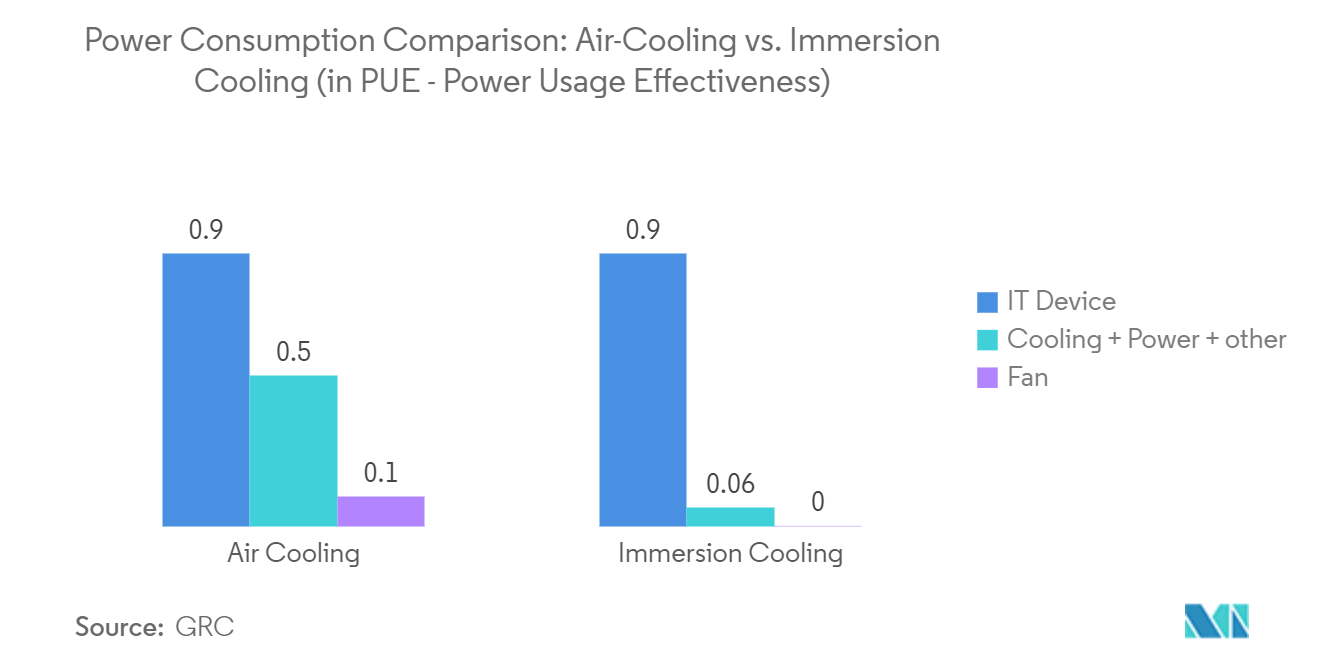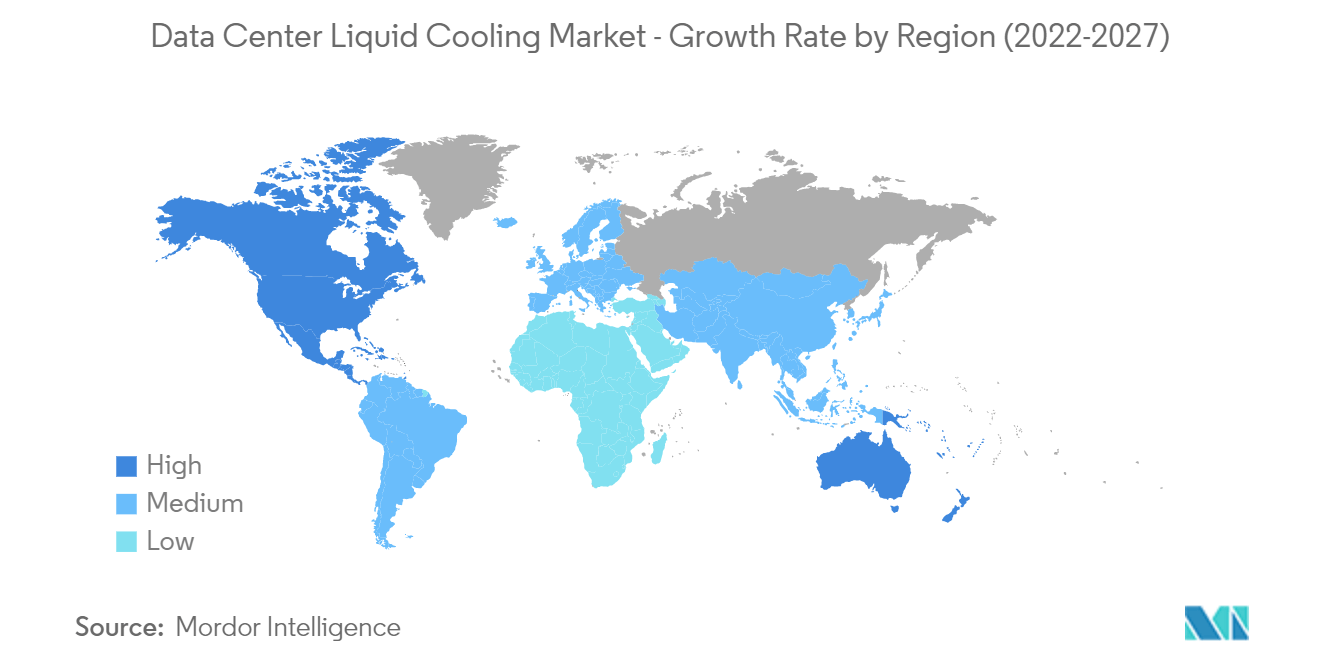Market Trends of Data Center Liquid Cooling Industry
This section covers the major market trends shaping the Data Center Liquid Cooling Market according to our research experts:
Indirect Cooling is Anticipated to Account for a Significant Market Share
- Direct-to-chip cooling, also known as indirect or liquid-to-chip cooling or cold plate cooling, is the most common liquid cooling method which transfers heat from the server to the outside using a chilled water loop and a coolant on a cold plate inside. Data centers are entering applications with unprecedented computation and core count demands in the modern era. These days, as traditional air cooling hits its limits, data center operators and owners must reconsider the growing density and the challenge offered.
- High-performance, high-frequency, and intensive workload conditions, multi-core computing, including artificial intelligence (AI) and machine learning (ML), and end-to-end data center solutions are in high demand in data centers. Data center owners could meet various needs across the company due to the most recent advancements in indirect or direct-on-chip liquid cooling and system integrator services.
- Indirect or direct-to-chip cooling utilizes liquid or phase-change heat-transfer mechanisms. It offers extensive power and heat dissipation at a minimum operating temperature. Furthermore, it allows it to work under operating conditions, and a processor can perform significantly faster than a processor cooled by other conventional means.
- Many firms offer cold plate technology that can be implemented into new and existing servers. Direct-to-chip cooling technology often has a higher heat dissipation capability than backplane heat exchangers. A hybrid cooling approach is necessary because direct-to-chip cooling typically only removes 70-75 percent of the heat produced by the machinery in the frame.
- The direct-to-chip-cooling trend is expected to continue in 2022 and increase significantly over the forecast period. The IT industry is researching new cooling technologies for heat sources directly contacting the processor. ZutaCore's direct-on-chip dielectric solutions enable efficient and sustainable cooling of increasingly powerful CPUs and GPUs. With this high-performance computing, power grows with new microprocessors and SoC (system on chip) architectures. This growth allows for more advanced processing, such as large-scale data analysis and immersive virtual reality experiences.

North America is Anticipated to Hold a Dominant Market Share
- North America is an early adopter of newer technologies. The region saw a tremendous increase in the penetration of linked devices. Investors in data centers are increasingly funding direct-to-chip and liquid immersion cooling technologies. The worldwide development of 5G networks, of which the United States is one of the early adopters, has boosted the significance of edge data centers. Many American operators have begun investing in these centers, including EdgePresence, EdgeMicro, and American Towers.
- The mobile data traffic has increased considerably over the years, from 1.26 exabytes per month of data traffic to 7.75 exabytes per month in 2021, as reported by Cisco Systems. According to Ericsson, the data traffic is expected to triple further by 2030. Thus, the distributed cloud that can secure the low latency and high bandwidth required to connect to such a scale quickly is expected to come into action. Several technology giants address critical challenges while managing their server and computational needs. A major factor responsible for the rising densities is the rapid rise in data-crunching for AI.
- The time people and businesses spend online is dramatically increasing in the United States. The country is the largest market for data center operations, and it is still expanding due to the increased data consumption by end users. There are now more facilities that can support exabytes of data created by commercial users and consumers due to the growing popularity of the Internet of Things (IoT), which is a significant driver for the US hyper-scale data center and enhances the need for a liquid cooling market.
- Direct-to-chip liquid cooling is growing in popularity in North America. On-site water treatment facilities with dual piping systems are included in the facilities that use water for cooling. Many vendors in the Southeastern and Western regions of the country are switching to water-cooled chillers, which have an economizer mode that enables partial facility cooling by using outside air.
- Additionally, Canada is continuously growing and providing more data center infrastructure solutions due to increased demand for efficient data centers, initiatives for ecological data center solutions, and substantial growth of power density across the region. According to Natural Resources Canada, around half of the energy consumed in a data center is utilized by computing servers, with a further 40% being attributable to cooling these servers. Furthermore, the climatic conditions of the cities in Canada are recorded with an annual temperature of 42.8 °F. This eliminates the need for extensive cooling systems in the data centers and, in turn, helps to reduce operational costs.

